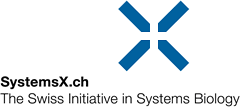Modeling the Cellular Phosphorylation Response to Double Strand Breaks Using Quantitative Mass Spectrometry
The genomes of all living organisms are constantly subjected to deleterious attacks. Of the many types of DNA lesions, the most dangerous is probably the double-strand break (DSB). To induce the repair of DSBs, the DNA damage signal must be conveyed to numerous pathways across the cell, and protein phosphorylation has been demonstrated to play a central role in conveying the signal to elicit the DNA damage response (DDR). Previous studies have identified numerous protein kinases involved in DNA damage-induced protein phosphorylation. Some of these kinases play critical roles in the DDR, but they have mostly been studied as isolated functional entities. Thus, the elucidation of the functional relationships between these kinases and their roles in determining the cellular response is a critical task for the understanding of the DDR at the systems level.
In order to delineate the involvement of selected kinases in the DDR, we use targeted proteomics by selected reaction monitoring (SRM) to study phosphorylations mediated by those kinases. The data collected by SRM is then explored using computational approaches: to identify informative phosphorylation signals, which can predict the cellular response to DSBs; to provide a descriptive network model, detailing the functional relationships among the measured nodes. The overarching aim of the IPhD Project is to develop a MS-based strategy to derive an integrative systems-level model which will shed light on the relationships between these kinases and predict the cellular response to DSBs.
Mot-clé: DNA Damage, Phosphorylation, Selected Reaction Monitoring, Network Reverse Engineering
retourner
